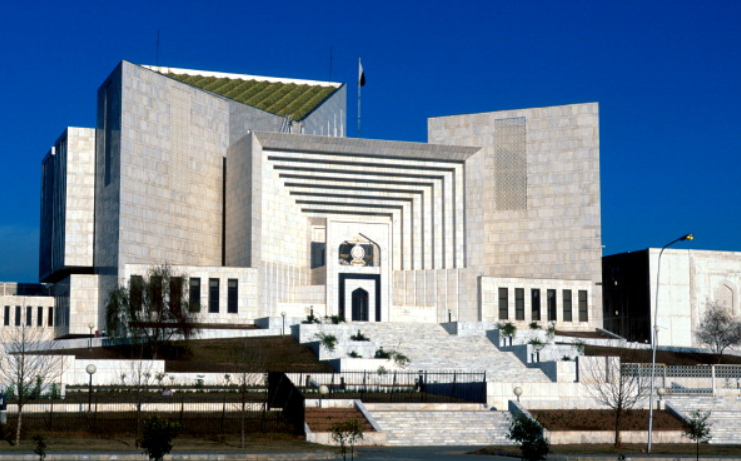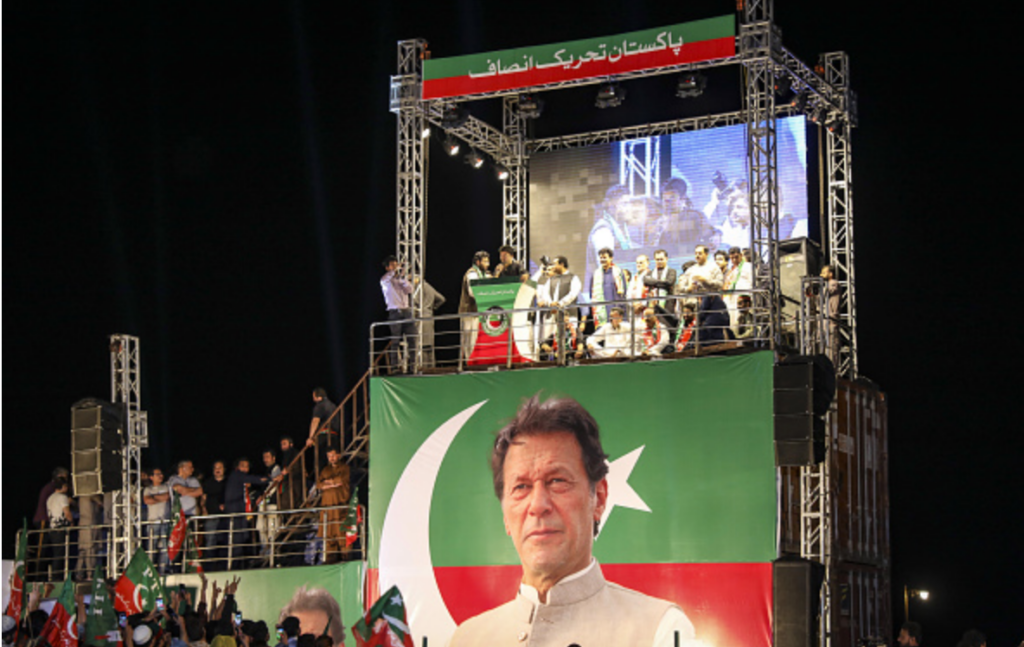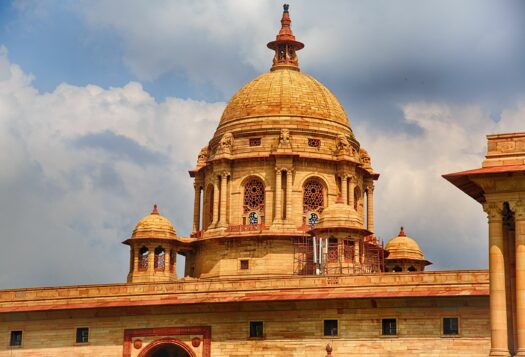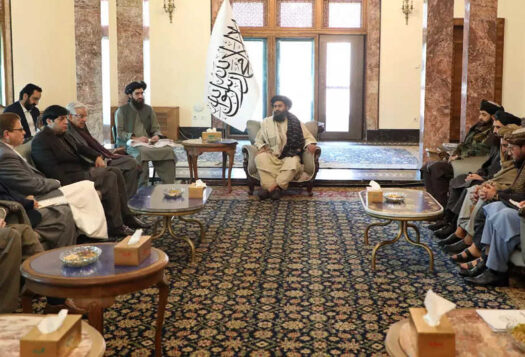
After midnight on April 9th, Imran Khan became the first Prime Minister in Pakistan’s history to be ousted through a Vote of No-Confidence (VoNC), passed against him by a majority of the members of the National Assembly. The role of Pakistan’s Supreme Court was pivotal in this process as the VoNC was only made possible by the April 7th short order of the Court, which halted the attempts of the Speaker of the National Assembly to obstruct the vote. Though the short order does not elaborate upon the reasons for the Court’s findings, an analysis of the Court’s jurisprudence illuminates the possible rationale behind the verdict. More importantly, the decision is a clear signal that illegal actions of constitutional office-holders will not be tolerated merely because a return to the electorate is framed as a more attractive alternative to the restoration of a representative assembly—a decision which is crucial to the functioning of Pakistan’s representative democracy.
Involving the Court
It is important to identify how the Supreme Court became the battle arena for halting the VoNC. Amidst growing public dissatisfaction over the economy, the Pakistan Democratic Movement (PDM)—a coalition of opposition parties—had gained traction in its bid to remove Imran Khan as the Prime Minister. This resulted in the PDM filing the notice for moving the VoNC resolution on March 8th.
The week preceding the VoNC was dominated by Imran Khan brandishing the “letter,” which he alleged provided proof of foreign conspirators seeking to remove him through the VoNC to exert their influence on Pakistan’s foreign policy. This letter had grave significance on April 3rd, when the National Assembly met to vote on the Prime Minister’s fate. Before the VoNC could commence, the Speaker of the National Assembly gave the floor to the Information Minister, who repeated the allegations of a foreign-backed regime change—declaring that the VoNC amounted to “disloyalty” to the state and hence a violation of Article 5 of the Constitution. In response, the Speaker dismissed the resolution for the VoNC after declaring it to be the unlawful product of a “conspiracy.” The Speaker’s decision was followed swiftly by the President’s dissolution of the Parliament, on the Prime Minister’s advice, and a call for fresh elections.
The decision is a clear signal that illegal actions of constitutional office-holders will not be tolerated merely because a return to the electorate is framed as a more attractive alternative to the restoration of a representative assembly—a decision which is crucial to the functioning of Pakistan’s representative democracy.
The dissolution of the National Assembly could not have occurred without the Speaker’s decision to dismiss the resolution. Under Article 58(1) of the Constitution, the President is to dissolve the assembly upon the advice of the Prime Minister, but to render such advice the Prime Minister must not be subject to a pending VoNC. The purpose of this condition is to prevent a Prime Minister from sidestepping a VoNC by de-seating, through dissolution, the majority of the members of the House whose confidence he may no longer command. The Speaker’s dismissal of the VoNC resolution removed the only restraint on Imran Khan’s power, allowing him to call for the dissolution of Parliament on April 3rd.
The uproar from the opposition following the dissolution prompted the Supreme Court to exercise its suo motu jurisdiction, conferred upon it through Article 184(3) of the Constitution. Article 184(3) empowers the Court to take cognizance of an issue if the said issue is of “public importance” and concerns the “fundamental rights” of citizens. If the Court itself is satisfied that this two-pronged test is met, it can adjudicate upon the matter without any party needing to approach the Court. Suo motu cases have increased remarkably in Pakistan over the last two decades, but this is the first time that the legality of the dissolution of the sitting parliament was adjudicated under the Court’s suo motu jurisdiction. In previous cases, the aggrieved parliamentarians have filed petitions before the Court; even in this instance, petitions were reportedly being prepared within hours of the dissolution when the Supreme Court took up the matter. The Supreme Court later claimed that its swiftness was justified because ‘everyone’ on the Bench believed that it was a ‘constitutional matter.’
The Court and the Parliament
Before the Court could evaluate the legality of the Speaker’s conduct, it had to address Article 69 of the Constitution, which bars the courts from questioning the “validity of any proceedings” in Parliament. A bare perusal of this provision may give the impression that the Speaker’s actions—or any action taken within the confines of the Parliament—would be shielded from the scrutiny of the courts. However, judicial pronouncements on such “ouster clauses” (i.e., clauses that seek to oust the courts’ authority) show that the Supreme Court has itself carved out exceptions for certain cases in which the courts may still intervene. As a result, no proceeding remains completely immune from judicial scrutiny if a petitioner can show that the case falls within the three exceptions carved out by the Court.
The Speaker’s dismissal of the VoNC resolution removed the only restraint on Imran Khan’s power, allowing him to call for the dissolution of Parliament on April 3rd.
To be protected by an ouster clause, the petitioner must show that the decision under challenge/decision was taken (a) without jurisdiction, or was (b) “coram non judice” (i.e., decided by a body that was improperly constituted), or (c) displays malice. Malice may be ‘malice in fact’ or ‘malice in law’—the latter referring to an act done without lawful excuse which is so “blatantly illegal” that it could not have been contemplated by the law, even if it does not necessarily stem from ill-will.1 To evaluate the Speaker’s conduct, the Supreme Court would need to determine that the VoNC’s dismissal fell within one of the three listed exceptions. Although this is not outlined in the short order, the Court clearly viewed this test to have been met, or it would not have begun its review of the Speaker’s dismissal of the resolution for the VoNC.
An established legal principle—relied on repeatedly by the Supreme Court—dictates that a public functionary (i.e., the Speaker) has no power of their own but can only do what it is authorized to do by law. Therefore, the Speaker had no discretion to act on his whim, and any power to dismiss the resolution would have to come from provision by law. Article 95 of Pakistan’s Constitution is crucial in this context. It specifies the procedure for conducting a VoNC and establishes that a VoNC resolution must be moved by at least 20 percent of the National Assembly. However, Article 95 does not vest any power in the Speaker to dismiss such a resolution. The only action that the Speaker can then take is to put the resolution to a vote before the House. This appears to be the interpretation that prompted the Court to declare that the Speaker’s dismissal was “contrary to the Constitution,” as he possesses no power to take stock of the members’ loyalty moving the resolution.

The Supreme Court’s declaration of the illegality of the Speaker’s dismissal had great significance because the dissolution of the Assembly could not have occurred without it. A cardinal legal principle is applicable to such situations, which states that the “superstructure” built upon an unlawful act must also fall with the unlawful act—in this case, the Assembly’s dissolution was the “superstructure” to the Speaker’s decision, and thus the dissolution was also unlawful.
Past Cases
The Supreme Court has not always reversed the dissolution of Parliament, even when its dissolution was judged as unlawful. In the Haji Saifullah case from 1989, the Court heard a challenge to General Zia-ul-Haq’s decision (then President) to dissolve the National Assembly spearheaded by Prime Minister Junejo, with the challenge filed after Zia’s death, but before the elections which were to occur in November 1988. The Court declared that the dissolution was unlawful for not meeting the prerequisites outlined in Article 58(2)(b)—a since-deleted provision that allowed the President to dissolve the assembly if he believed that government could no longer operate in accordance with the Constitution. However, the Court refused to restore the Assembly for various reasons. It held that the Petitioner (a member of the National Assembly) had approached the Court at a “belated” stage (this can perhaps be attributed to the fact that the challenge, realistically, could not have been filed until after Zia’s death). A consequence of this delay was that the whole country was now “geared towards elections,” with political parties and the public alike having “accepted” the decision to go to the polls. Thus, “national interest” would be served better in letting the electorate choose its representatives, demonstrated by the “clear national consensus” supporting the holding of elections where political parties would finally be able to contest (unlike the “party-less” elections which had resulted in the dissolved assembly and cast doubt over its representative character).
The distinctions between Saifullah and the present dissolution are clear. There was no gap of months, as the Supreme Court’s swiftness allowed the case to be heard and decided within five days. Nor was there apparent an “overwhelming majority” in the country demanding elections, or tangible steps taken towards holding the same.2 On the last date of hearing, the Election Commission of Pakistan notably stated that it would be unable to conduct elections within the stipulated 90-day period, as the desired delimitation of constituencies had not occurred in time. Pakistan’s 2022 National Assembly also had a better claim to represent the electorate than the one dissolved in 1988. There also appeared to be no compelling justification for the Court to not restore the Assembly by simply undoing an unlawful action undertaken five days earlier. A closer parallel to the 2022 decision is the Nawaz Sharif case from 1993, where President Ghulam Ishaq Khan ordered the dissolution of the Assembly headed by Nawaz Sharif as Prime Minister—on account of Sharif’s explosive speech against the President—which was challenged by Prime Minister Sharif within a week.3
Perhaps the last of the legal maxims this piece shall reference explains best the legacy of this verdict: that no one can be allowed to benefit from their own wrong.
Akin to Saifullah, the Court, in Nawaz Sharif, found the dissolution to not meet the prerequisites of Article 58(2)(b), but ultimately restored the assemblies because the Court was not confronted in Nawaz Sharif with the unique circumstances from 1988. When contrasted with the decision in Saifullah, the 2022 verdict demonstrates that when concrete steps have not yet been taken towards elections which would point towards a more representative Parliament, the Supreme Court would not find ‘national interest’ to lie in maintaining the dissolution. Thus, the Supreme Court has established the precedent that where an illegal act has led to the dissolution, the Supreme Court would set aside not only the unlawful actions which serves as the “base” but also the resulting “superstructure,” i.e., the dissolution.
The Verdict’s Legacy
Perhaps the last of the legal maxims this piece shall reference explains best the legacy of this verdict: that no one can be allowed to benefit from their own wrong. The Speaker’s decision was a blatant, unconstitutional ploy to allow Prime Minister Khan to retain power. When the Court appeared unconvinced about the Speaker’s authority to rule on the members’ loyalty, Khan’s sleight of hand and the subsequent dissolution was used to tempt the Court into ruling that ‘the ultimate sovereign’—the people—be the deciders. There is no denying that democracy functions best through such voting. However, allowing the call for new elections would have condoned unconstitutional actions. Not restoring the Assembly would have increased the incentive for subsequent government officials to derail democratic procedures specifically provided for in the Constitution.
Therefore, the Court’s decision was vital to curb this modus operandi by preventing the ruling party from benefiting from their egregious constitutional violation. Any other decision would signal a failure of the Court to uphold the very instrument which creates it, namely the Constitution. The decision, thus, sends a clear message that political engineering to force an election would be set aside if it comes at the expense of the Constitution. In doing so, it rebuilds faith in the constitutional processes which are essential to the functioning of a representative democracy.
***
Image 1: Robert Nickelsberg/Liaison via Getty
Image 2: Bloomberg via Getty Images


